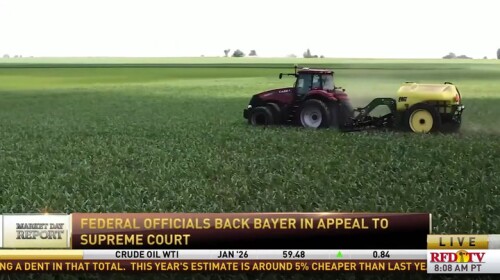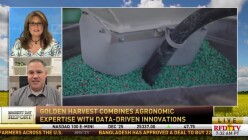Planting
Federal lawyers submitted a brief this week backing Bayer’s argument that federal laws governing herbicides like Roundup should prevent lawsuits over the popular chemical.
University of Illinois Ag Economist Gary Schnitker says early projections indicate soybeans will be more profitable than corn in 2026.
Farmers will need to closely monitor forecasts if the regulatory changes are implemented, as temperature cutoffs will replace fixed spray dates.
“It’s been a very interesting year!”
“It’s drier than normal, but it’s been this dry before!”
























